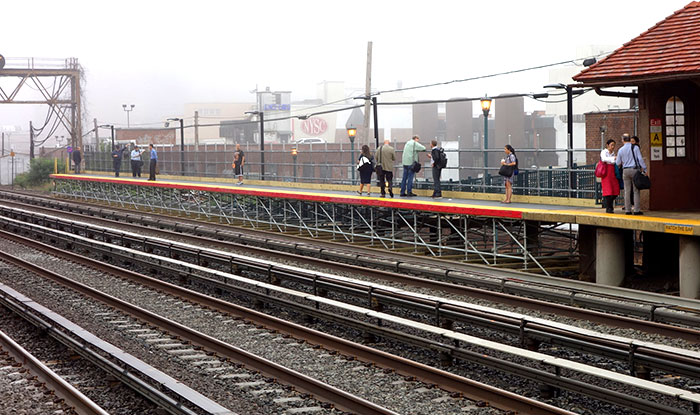Photo Courtesy of MTA/Amanda Kwan
The comptroller’s plan would positively affect commuters who use LIRR stations such as this one in Forest Hills.
By Forum Staff
City Comptroller Scott Stringer on Tuesday called on the Metropolitan Transportation Authority to drop Metro-North and Long Island Rail Road fares to the price of a MetroCard swipe ($2.75) for all trips within the five boroughs.
In his new report, “Expanding Access in One Swipe,” Stringer notes that while commuter rail stations are often the only mass transit option for the 1.4 million residents of 31 neighborhoods in Queens, Brooklyn, and the Bronx, expensive ticket prices—nearly four times as costly as a MetroCard swipe—leave locals stranded and forced to take lengthy trips on overcrowded roads, subways, and buses. Simply lowering fares and allowing free transfers between commuter rail, subways, and buses for all trips in the city would have system-wide benefits and help alleviate the transit crisis, the comptroller said.
As part of his new analysis, Stringer called on the MTA to improve job access, reduce commute times, extend the reach of the transit system, and relieve overcrowding by:
• Reducing fares for all in-city commuter rail trips and making more local stops. The MTA should take full advantage of its rail assets, the comptroller advised. Whether traveling via bus, subway, or commuter trail, all in-city MTA trips should cost $2.75 and allow free transfers. Moreover, LIRR and Metro-North trains should make more local stops in neighborhoods like St. Albans, Queens Village, Laurelhurst, Murray Hill, Spuyten Duyvil, Tremont, and Williamsbridge, so that New Yorkers can actually take advantage of this rapid rail service.
• Connecting bus service with commuter rail stations. For many commuters, the gaps between bus and rail infrastructure makes transferring between the systems and using rail altogether too difficult. In Northeast Queens, for instance, while dozens of bus lines converge at the terminus of the 7 Train, several LIRR stations are multiple blocks from a single bus stop, with similar patterns in Northwest Bronx and Southeast Queens. As a more equitable fare policy is introduced, NYC Transit Bus and MTA Bus should provide more frequent service to these commuter rail stations, Stringer said.
• Making all commuter stations Americans with Disabilities Act-accessible. Stringer noted that half of the Metro-North and LIRR stations in Queens, Brooklyn, and the Bronx are not currently ADA-accessible. Much like the existing paywall that surrounds commuter rail stations, these physical barriers to access have the effect of denying service to thousands of young families, seniors, and other mobility-impaired travelers every day. This should be rectified as soon as possible, Stringer demanded, adding new elevators, ramps, and wayfinding upgrades for the sight- and hearing-impaired.
The comptroller said his proposal to open up commuter rail service at 38 Queens, Brooklyn, and Bronx stations would cost an estimated $50 million per year.
“New Yorkers shouldn’t be held hostage by the MTA to get home to their families, and they shouldn’t have to spend extra hours crammed on the subway and bus to make ends meet,” Stringer added. “Affordable Metro-North and LIRR service would give New Yorkers more time with their family and friends, cut congestion on our streets and in our subways, and expand economic accessibility for hundreds of thousands of people. The MTA should stand clear of the doors, not hold service from the straphangers who need it most.”

